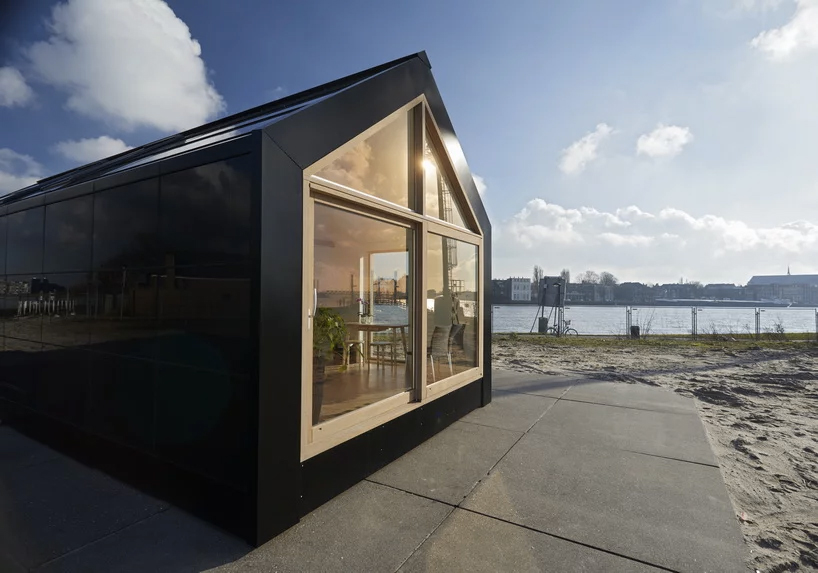
Dutch practice Roosros Architecten has designed a sustainable open source prefab that can be built on land or water.
Dubbed the Petit Place, the micro-dwelling is part of the open source Wikihouse movement, meaning new modulations and variations can be devised and shared. The house uses a grid-pattern structure and is constructed with a computer-milled wooden kit, so its length and shape can be adjusted for the user.

The iroko-framed cabin is wrapped in a breathable Gore-tex ‘anorak’ foil and is bookended by triple-insulated glass doors and windows which provide views through the dwelling. Its waterproof skin helps control the interior climate of the tiny home and reduce reliance on artificial heating and cooling. Meanwhile, the prefab house itself is powered by solar panels capable of producing 9,000 kWh of energy per year – around three times more than is needed to keep the home running.
Alternative versions of Petit Place’s exterior include a ‘green machine’ planted model, and a zero waste model structure using only reclaimed wood.

Petit Place prefabs start from €25,000, or approximately €2,000 per sqm, and includes the building’s envelope and structure. Units can also be equipped with a kitchen, shower, toilet, water, electricity and even underfloor heating.
Interiors are surprisingly spacious thanks to the cabin’s pitched roof, which adds heights, and pared back wooden walls and floors.

Floorplans start from a dinky 25 sqm, rising to 1,000 sqm, based on the number of modular elements used, and the kits can be constructed by the buyer or a third party.






















